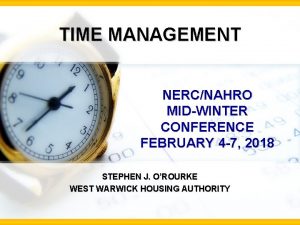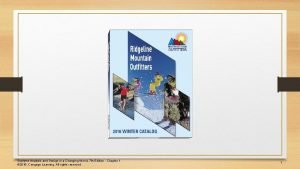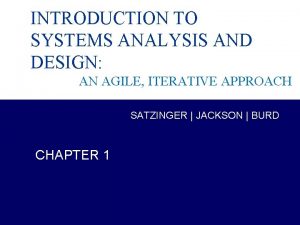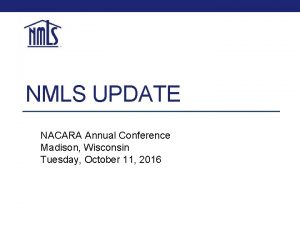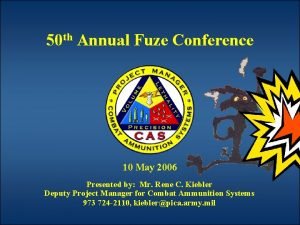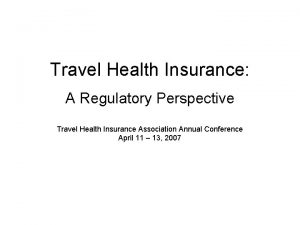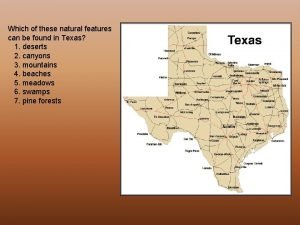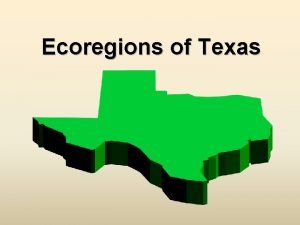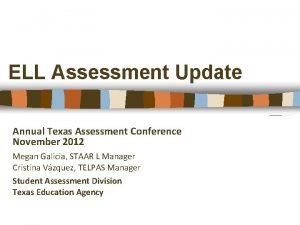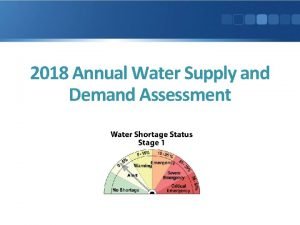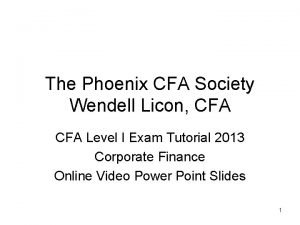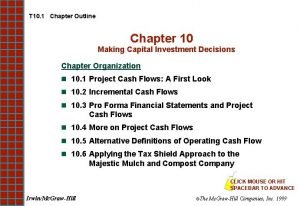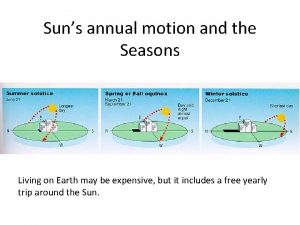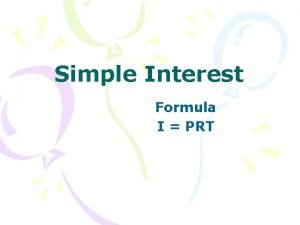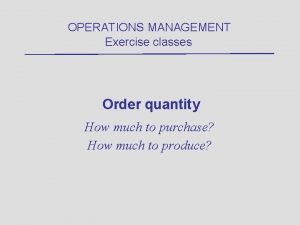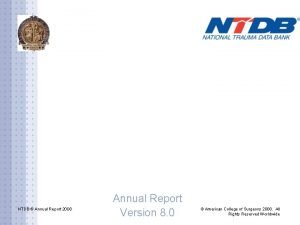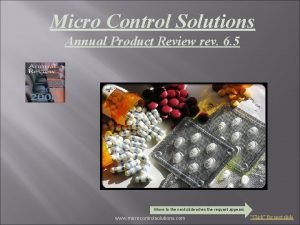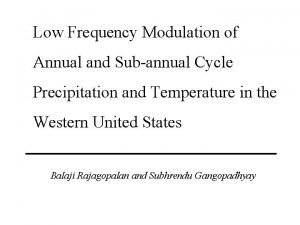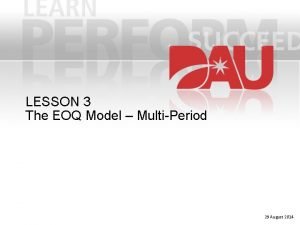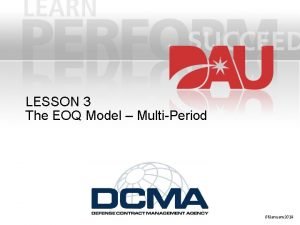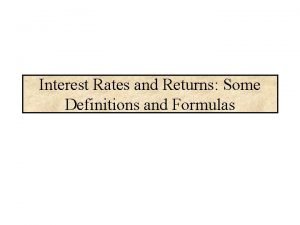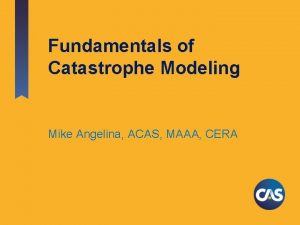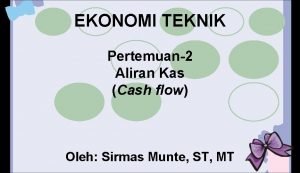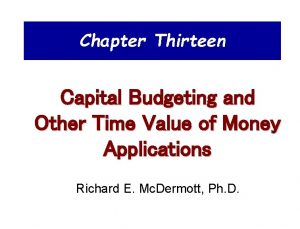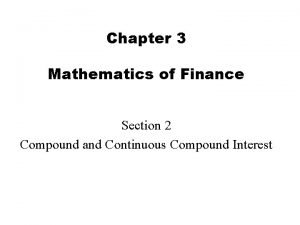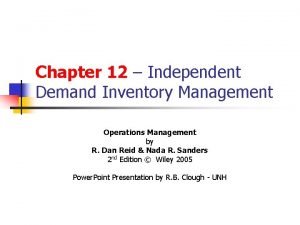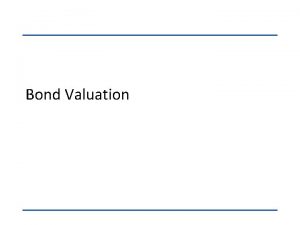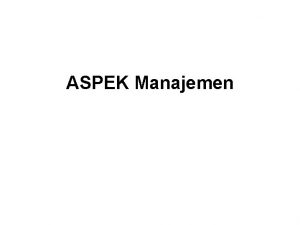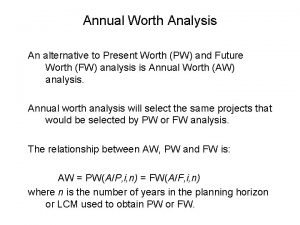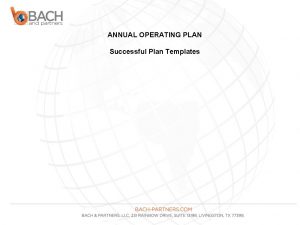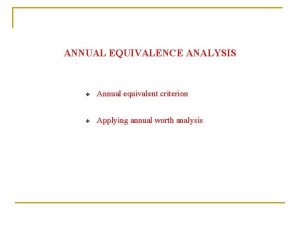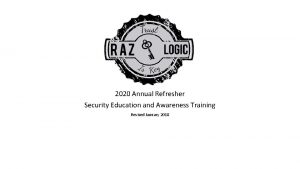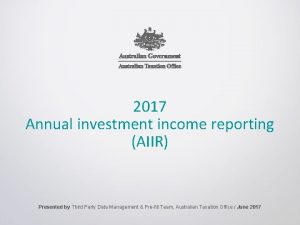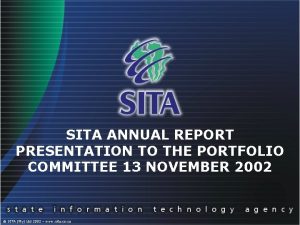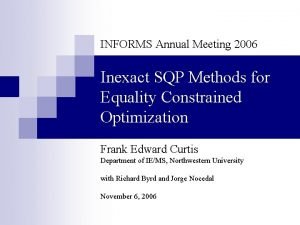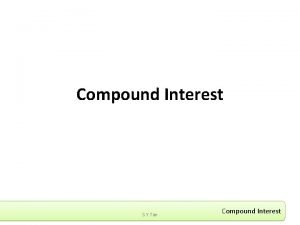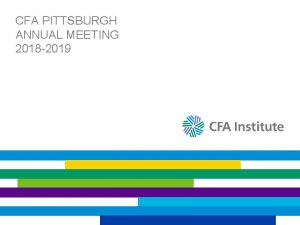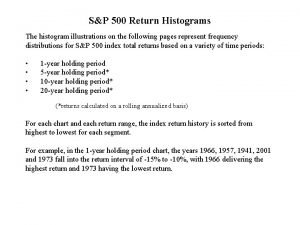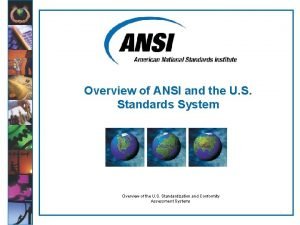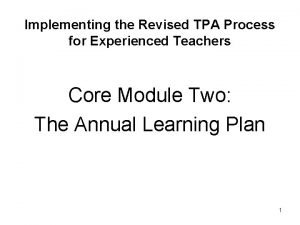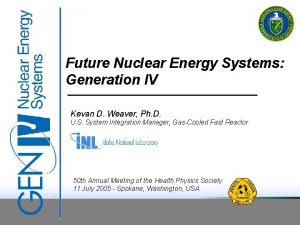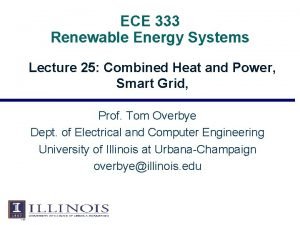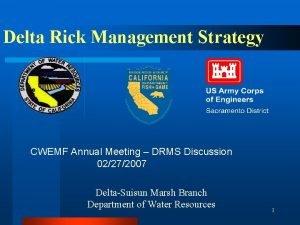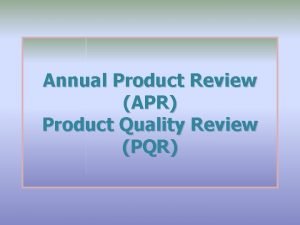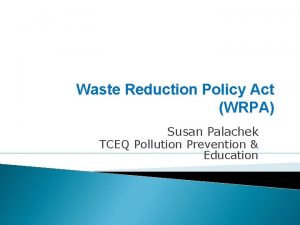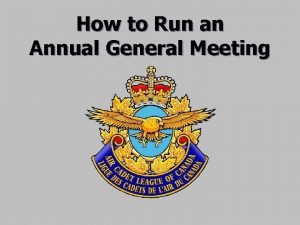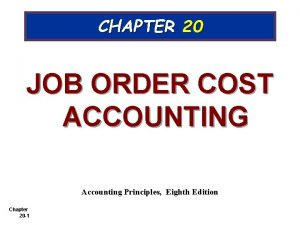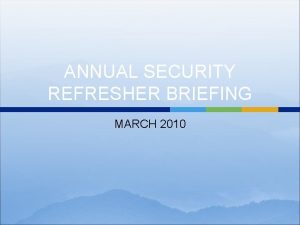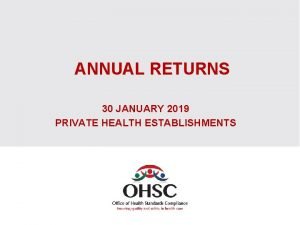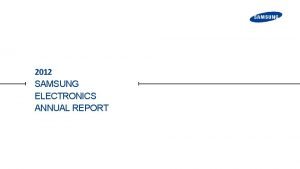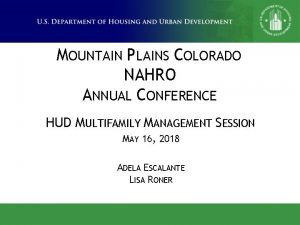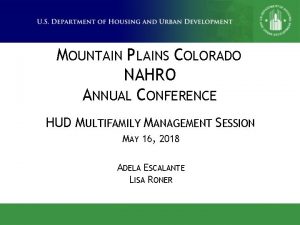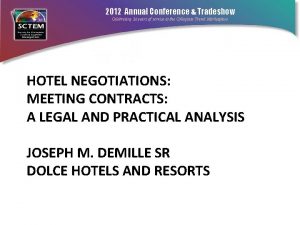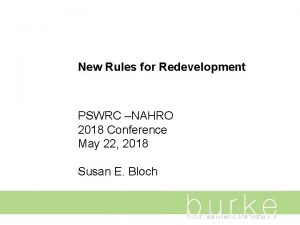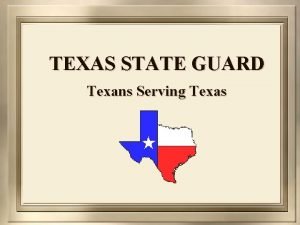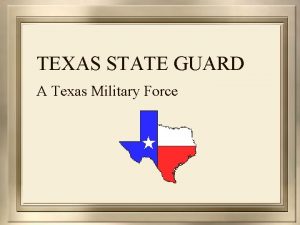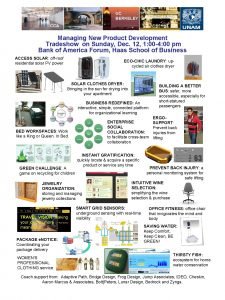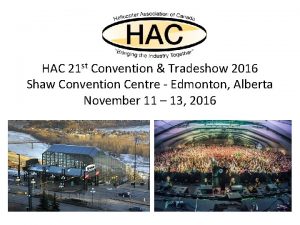Texas NAHRO 31 st Annual Conference and Tradeshow



























![PRE-INSPECTION PHASE STEP 3: Confirm Inspection [Arrange Date and Time] – Inspector contacts the PRE-INSPECTION PHASE STEP 3: Confirm Inspection [Arrange Date and Time] – Inspector contacts the](https://slidetodoc.com/presentation_image_h2/ac27718af931d68366d1f4293a5f368d/image-28.jpg)
![STEP 3: Confirm Inspection [Arrange Date and Time] (Continued) PRE-INSPECTION PHASE Inspector sends an STEP 3: Confirm Inspection [Arrange Date and Time] (Continued) PRE-INSPECTION PHASE Inspector sends an](https://slidetodoc.com/presentation_image_h2/ac27718af931d68366d1f4293a5f368d/image-29.jpg)




























































































- Slides: 121

Texas NAHRO 31 st Annual Conference and Tradeshow (REAC: UPCS Inspection Protocol) April 24 - 25, 2007 1

Training Agenda TUESDAY, APRIL 24 TH: 8: 30 am – Welcome / Go over this thing 8: 45 am – Protocol 10: 00 am – BREAK (30 Minutes) 10: 30 am – Protocol (Oh no, not more of it!) 12: 00 pm – LUNCH 1: 30 pm – “Inspection Day” Video 2: 00 pm – Deficiencies, Definitions and the Software, oh my! 2

Training Agenda (Continued) TUESDAY, APRIL 24 TH: 3: 00 pm – BREAK (30 Minutes) 3: 30 pm – Deficiencies, Definitions … 5: 00 pm – End for the Day 3

Training Agenda (Continued) WEDNESDAY, APRIL 25 TH: 8: 30 am – Deficiencies, Definitions … 9: 30 am – HQS vs. UPCS, Scoring, Appeals, etc. 10: 00 am – BREAK (30 Minutes) 10: 30 am – HQS vs. UPCS, Scoring, Appeals, etc. (Continued) 12: 00 pm – End of Session 4

Ground Rules RULE NUMBER 1: “Don’t shoot the messenger!” (Me. ) RULE NUMBER 2: Ask questions! Remember, there are no dumb questions, just dumb answers. (Which I’ll try my best not to give. ) RULE NUMBER 3: When in doubt, refer to RULE NUMBER 1 above. 5

Reminder! = 6

Questions to be Answered - How do I properly prepare for a REAC inspection? - Where should I focus my resources? - What is my role during the inspection? 7

Questions to be Answered (Continued) - How will certain things, like smoke detectors, be checked? (Will the inspector use canned smoke or just push the button? ) - What kind of questions should I ask the inspector before he leaves my site so that I can better understand what went wrong? 8

Questions to be Answered (Continued) - How do I appeal a finding, and what kinds of documentation do I need to back up my appeal? - How do I educate my residents during their annual inspections in order to prevent findings during the REAC inspection? - Is there a checklist of standards I can use before the inspection to help me make sure everything is up to par? 9

PROTOCOL 10

PIH/REAC’s Mission The Real Estate Assessment Center's (REAC) mission is to … Our Mission … provide and promote the effective use of accurate, timely and reliable information assessing the condition of HUD's portfolio; … to provide information to help ensure that HUD subsidized housing remains decent, safe and sanitary; … and to restore the public trust by identifying fraud, abuse and the wasting of HUD resources. 11

UPCS The Uniform Physical Condition Standards (UPCS) are the foundation of HUD/PIH-REAC’s Physical Inspection Program. – Creates the structure of the physical inspection. • (Identifies five inspectable areas and health and safety hazards. ) – Establishes standardized definitions for inspectable items, the basis for electronic inspections via UPCS software. • (Inspection data is validated, producing a score which indicates the physical condition of a property. ) – Provides a uniform, objective protocol for training inspectors performing inspections of all property types. 12

PHYSICAL INSPECTION STRUCTURE PROPERTY Site Building Exterior Building Systems Common Areas Units Inspectable Areas 13

PHYSICAL INSPECTION STRUCTURE INSPECTABLE ITEMS SITE Fencing and Gates Grounds Mailboxes/Project Signs Market Appeal Parking Lots/ Driveways/Roads Etc. BUILDING EXTERIOR Doors Fire Escapes Foundations Lighting Roofs Walls Etc. BUILDING SYSTEMS Domestic Water Electrical System Elevators Emergency Power Fire Protection HVAC Etc. COMMON AREAS Basement/ Garage/Carport Community Room Day Care Halls/Corridors/ Stairs Etc. UNIT Bathroom Call-for-Aid Ceiling Doors Electrical System Floors Hot Water Heater Kitchen Etc. HEALTH & SAFETY Air Quality Flammable Materials Elevator Electrical Hazards Emergency/Fire Exits Etc 14

UPCS SOFTWARE CONFIGURATION Deficiency Definitions No Observed Deficiency (NOD) Level 1 - or Inspectable Area Inspectable Item Observed Deficiency (OD) Level 2 - or Not Applicable (NA) Level 3 15

PASS SUBSYSTEM COMPONENTS Data The Collection INTERNET Device Inspector gathers data using UPCS Software on a DCD PASS Physical Assessment Subsystem - Scoring - Checklist - Inspection Review - Time Stamp Analysis - Reporting 16

SCORING Observed Deficiencies Building Profile Information Physical Assessment Score Predetermined weights and factors 17

PHYSICAL INSPECTION PROTOCOL – Standard set of rules and procedures followed on all inspections as established in the UPCS. – Includes three phases: • Pre-Inspection • Post Inspection – Each phase is completed in the above order 18

INSPECTOR’S ROLE – Perform objective, factual physical assessments. – Conduct inspections according to the HUD/PIH -REAC Physical Inspection Protocol. – Ensure success by complying with the UPCS. 19

CODE OF CONDUCT – Maintain professional conduct and demeanor at all times during the inspection and interaction with the inspection participants. – Display the HUD-issued photo id during the inspection. – Dress appropriately. – Be courteous and professional. – Be aware of cultural differences. – Defer resident questions concerning maintenance to the property representative. – Do not make promises about inspection results. 20

CODE OF CONDUCT (Continued) – Conflicts of interest – be aware! – Do not offer an opinion as to the quality of the site, building or unit. – Do not bring a firearm or other weapons onto a property. – Do not invade a resident’s privacy by attempting to open a closed door within a unit (bedroom, bathroom, etc. ) without the permission of the resident or the property representative. 21

CODE OF CONDUCT (Continued) – Do not disclose any information to a third party about the inspection results. Defer to the property owner/representative. – Do not utilize local HUD offices, MF or PHA offices to conduct personal business (phone calls, inspection uploads, etc. ) 22

SUMMARY HUD Physical Inspections are: – Objective – Consistent – Comprehensive – Evaluations of HUD-supported properties – A step to help HUD prioritize and direct its resources – A method to ensure that we all work together to provide housing that is decent, safe, sanitary and in good repair 23

PHYSICAL INSPECTION PROTOCOL 1 2 3 4 Receive inspection assignment Download property profile Confirm inspection Update inspection schedule 7 Meet with property representative Verify/update property profile info. a. property, b. participant, c. certificate, d. area measures 10 11 Inspect a. site, b. -d. building(s), and e. units Inspection Day 8 6 a. Identify sample buildings b. Enter generated sample units 5 12 Confirm/verify inspection data Visually verify/update building information 13 Complete Notification of Exigent and Fire Safety Hazards Observed form (if needed) and provide a copy to property representative Travel to property 9 Generate sample 14 Upload completed inspection 24

PHYSICAL INSPECTION PROTOCOL PRE-INSPECTION 1 2 3 4 Receive inspection assignment Download property profile Confirm inspection Update inspection schedule 25

PRE-INSPECTION PHASE STEP 1: Receive Inspection Assignment – HUD awards RAP inspections to winning bidder. – Contractor/servicing mortgagee assigns inspection and notifies an inspector. – Property profile information is available for downloading from the REAC Web site. 26

STEP 2: Download Property Profile PRE-INSPECTION PHASE – Inspector downloads Property Profile from the REAC Web site directly to the UPCS software on their DCD. – Downloaded information automatically populates appropriate fields in the UPCS software. – Property Profile contains the following information, and MUST BE VERIFIED while on site! • Inspection number. • Property information: name, street address (no P. O. Box), and telephone number of the property, and number of buildings and units. • Participant information: participant’s name, role, and organization name, address, telephone number. • Building information: building name, street address (no P. O. Box), type, construction year, number of units. 27
![PREINSPECTION PHASE STEP 3 Confirm Inspection Arrange Date and Time Inspector contacts the PRE-INSPECTION PHASE STEP 3: Confirm Inspection [Arrange Date and Time] – Inspector contacts the](https://slidetodoc.com/presentation_image_h2/ac27718af931d68366d1f4293a5f368d/image-28.jpg)
PRE-INSPECTION PHASE STEP 3: Confirm Inspection [Arrange Date and Time] – Inspector contacts the authorized property representative (owner, management company or PHA) to: • Explain the purpose of the inspection – To objectively assess the physical condition of the property, not to create a laundry list of maintenance items • Negotiate mutually agreeable time for physical assessment – Inspector should notify the TAC if the property owner refuses to permit an inspection. – All inspections must occur in presence of the property representative. 28
![STEP 3 Confirm Inspection Arrange Date and Time Continued PREINSPECTION PHASE Inspector sends an STEP 3: Confirm Inspection [Arrange Date and Time] (Continued) PRE-INSPECTION PHASE Inspector sends an](https://slidetodoc.com/presentation_image_h2/ac27718af931d68366d1f4293a5f368d/image-29.jpg)
STEP 3: Confirm Inspection [Arrange Date and Time] (Continued) PRE-INSPECTION PHASE Inspector sends an Inspection Notification Letter – Informs property representative to: • Notify all residents of upcoming inspection • Have available for the inspector on day of inspection. . . – – – – Copy of document notifying residents Total number of buildings and units Address or unique building identifier for each building Applicable certificates (e. g. , elevators, boilers, etc. ) Occupancy rate Rent roll Site map or plot of property (if available) Area measures for parking lots/driveways/roads and walkways/steps 29

STEP 4: Update Inspection Schedule PRE-INSPECTION PHASE – Inspections are to be performed during normal business hours, which vary from agency to agency. – The inspector is responsible for updating the REAC Inspection Schedule for any and all changes and also for notifying any affected parties. – PIH-REAC Quality Assurance (QA) inspections are based on the REAC Inspection Schedule • Servicing mortgagee provides REAC with individual inspector schedules • PIH-REAC must be aware of all schedule changes 30

PHYSICAL INSPECTION PROTOCOL INSPECTION 5 6 7 Travel to property Meet with property representative Verify/update property profile info. a. property, b. participant, c. certificate, d. area measures 8 9 Visually verify/update building information Generate sample 12 Confirm/verify inspection data 10 a. Identify sample buildings b. Enter generated sample units 11 Inspect a. site, b. -d. building(s), and e. units 13 Complete Notification of Exigent and Fire Safety Hazards Observed form (if needed) and provide a copy to property representative 31

INSPECTION PHASE STEP 5: Travel to Property Inspector must follow REAC rules for travel: – Inspector must be physically present and on time to conduct the inspection. – If the inspection cannot be performed or completed on the scheduled day, the inspector must call the TAC immediately. – If the weather prevents the inspector from arriving at the property, they must request approval from the TAC to declare the inspection “unsuccessful”. 32

INCLEMENT WEATHER POLICY – Property representative may postpone an inspection due to inclement weather. • Inspector must report immediately to REAC’s Physical Inspections Technical Assistance Center (TAC). • Inspector receives log number from the TAC to upload with the inspection confirming cancellation. – Inspectors should not inspect a property if a “Severe Weather Advisory” in in effect. • Includes, but is not limited to, hurricanes, tornadoes, thunderstorms, hail or any other adverse weather condition that would likely endanger the safety of the participants (includes any snowstorm for which such an advisory has been issued). 33

SNOW POLICY – In the absence of a severe weather advisory, inspectors should attempt to inspect all properties regardless of snow. • Any inspectable item not visible due to snow is recorded as NOD (No Observed Deficiency). • Provide comment indicating items were hidden by snow. 34

INSPECTION PHASE STEP 6: Meet with Property Representative – Inspector identifies himself as an inspector of HUD properties, not an employee of HUD. – Inspector verifies that residents were given written notification of inspection. • Inspector must notify the TAC, if residents were NOT notified and TAC will advise if inspector is to continue. – Inspector discusses inspection purpose with property representative. • To objectively record the physical condition of the property, NOT to instruct property representative on maintenance and repair. – Inspector explains sampling process • Generates random sample of units to inspect. • Reduces length of inspection. 35

STEP 6: Meet with Property Representative (Continued) INSPECTION PHASE – Inspector explains how Life-Threatening Health and Safety Hazards will be handled. – Inspector. . . • Displays the HUD-issued photo id at all times. • Verifies rent roll (or other all-inclusive documents) to confirm proper building/unit count. • Verifies, if applicable, list of units relative to 504/FHA/ADA. • Verifies occupancy rate and records as percentage in DCD (for MF properties only). • Obtains area measures. – Inspector is always accompanied by the property representative while on the property. 36

INSPECTION PHASE STEP 7: Verify/Update Property Profile Information • The Property Profile … – Includes information on the property, participant, certificates and area measures. – Must be updated before the inspection begins. – Is used to generate statistically accurate building and unit inspection samples. • Incorrect sampling will invalidate the inspection which may require a re-inspection (at no additional cost to the Government) 37

INSPECTION PHASE STEP 7 a: Verify/Update Property Information – Inspector verifies/updates property information prior to conducting the inspection, including: • Property name, address and telephone number. • Scattered site information. • Total number of buildings and units. – A building is defined as any structure that has a contiguous roofline, a permanent foundation, is enclosed on all sides, and at least one utility servicing it, such as electric, gas, water or sewer. 38

STEP 7 b: Verify/Update Participant Information INSPECTION PHASE – Inspector verifies/updates participant information. • • • Participant name. Participant role (e. g. , site manager, owner, etc. ) Participant organization name. Participant address and telephone number. Participant e-mail address. – Participants may be individuals or organizations. • There should be at least 3 participants listed. • For PHA: must include Executive Director. • For MF: must include Owner and the Management Agent. 39

STEP 7 c: Verify Certificates INSPECTION PHASE – Inspectors should verify the existence of applicable certificates. • Check expiration date to ensure it is current. • Record results in UPCS software. – Inspectors should verify the existence of a Lead-Based Paint Disclosure Form and a Lead-Based Paint Inspection Report for buildings constructed built prior to 1978. 40

STEP 7 d: Obtain Area Measures INSPECTION PHASE – Inspectors should try to obtain Area Measures. • Refers to proportionality. – Proportionality is used to determine the percentage (square footage) of the defective area. – Proportionality only applies to: » Parking lots, driveways and roads. » Walkways and steps. – The rating level of the defect is based on the percentage of the defect. 41

STEP 8: Visually Verify/Update Building Information INSPECTION PHASE – Inspectors must validate building information • Building name and address • Building type • Building construction year (original year built – not rehabilitation date) • Total number of units – Failure to validate building information may result in an inaccurate count of buildings and units • Building and unit counts are used to generate the inspection sample – Inspectors must also determine if a building is uninspectable • Important to record uninspectable buildings before generating the sample 42

BUILDING TYPE DEFINITIONS – Common Building – A detached non-residential structure. – Duplex – A detached residential structure consisting of two units. – Low-Rise/Garden Apartments – A multi-unit residential structure consisting of two and one-half or less floors with a common hall entrance. – Mid/High-Rise Apartments – A multi-unit residential structure consisting of three or more floors with or without elevators. – Row/Town House – A single unit residential structure that is connected to a similar structure by a common sidewall with individual exterior unit entrance. – Single Family House – A detached residential structure consisting of one unit. 43

CLIENT ROOM POLICY – For nursing homes, group homes, and assisted living facilities, any room with a bed, or beds, is considered a “client room”. • Client rooms are to be inspected and listed as dwelling units. – Inspectors should change the number of units in the DCD to reflect client rooms. • All other areas of the facilities, including kitchens, dining areas, community areas, etc. , are to be inspected as common areas. 44

STEP 9: Generate Sample INSPECTION PHASE – Inspector generates sample using the sampling function of UPCS software • Mathematical and statistical equations • Statistically valid random sample • Displayed as sequence of unit numbers – Designed to produce a sample that accurately reflects what would have been recorded if all buildings/units were inspected 45

INSPECTION PHASE STEP 9: Generate Sample (Continued) – Variations to protocol produce inaccurate samples and may invalidate inspections – Inspector must follow protocol steps • Verify/update all property information before generating sample • Generate only one sample for each inspection in UPCS software 46

SAMPLING “DO’s” AND “DON’Ts” ü ü Do Don ’t ü ü Verify all property and building information prior to generating the sample. Use the all-inclusive list of units to determine sample units. Select units in the order they are displayed. Select alternate units in the order they are displayed. r Allow property owners to alter sample units. r Provide property owners with a list of samples prior to inspection. r Deviate from inspection protocol. 47

INSPECTION PHASE STEP 10 a-b: Identify Sample Buildings and Enter Generated Sample Units – UPCS software displays “Yes” in the “In Sample” field for each building included in the sample. – UPCS software displays sequence of unit numbers in the “Sample Units” text field. • Each number represents a unit in the selected building. • The order of the numbers represents the relative position of each unit on a complete list of units. – For example: The number 4 represents the fourth unit on the list. – Inspector adds sample units by using an ALLINCLUSIVE list of units. • The list may be the rent roll if it includes vacant as well as occupied units. 48

INSPECTION GUIDELINES – Direct specific resident complaints to the property representative. – Remind residents of the purpose of the inspection. • To record the physical condition of the unit, not evaluate housekeeping – Observe and inspect all five inspectable areas: • Site • Building Exterior • Building Systems • Common Areas • Units 49

INSPECTION GUIDELINES (Continued) – Call out all observed deficiencies and the severity level to the property representative as you perform the inspection. – Be alert to any Health & Safety hazards that may exist in an inspectable item. – Record items inside the development/property. • Any physical structures under the control of the housing provider (e. g. , city streets and sidewalks) must be inspected. 50

HEALTH AND SAFETY HAZARDS – Inspectors must rate and record observed Health and Safety deficiencies – Health and Safety items include: • • Air Quality Electrical Hazards Elevator Emergency/Fire Exits • Flammable Materials • Garbage and Debris • Hazards • Infestation – Certain Level 3 deficiencies automatically generate Health and Safety hazards 51

LIFE-THREATENING HEALTH AND SAFETY HAZARDS – Be observant of the life-threatening health and safety hazards listed on the Notification of Exigent and Fire Safety Hazards Observed form: A. Propane, natural, or methane gas B. Exposed wires or open electrical panels C. Water leaks on or near electrical equipment D. Blocked or unusable emergency or fire exits E. Blocked fire escapes or ladders F. Missing or misaligned chimney for gas-fired water heater/HVAC G. Window security bars preventing exit H. Expired fire extinguishers I. Inoperative/missing smoke detectors 52

LIFE-THREATENING HEALTH AND SAFETY HAZARDS (Continued) – All observed life-threatening health and safety hazards. . . • MUST be recorded in the DCD. • MUST be recorded on the Notification of Exigent and Fire Safety Hazards Observed form. • Include hazards found in buildings not in the sample. – Inspector notifies property representative of all hazards immediately. 53

STEP 11 a: Inspect Site INSPECTION PHASE – Site is defined as the area surrounding the building(s) of a property • Example: Fencing and Gates, Grounds, Mailboxes/Project Signs. – Only one site per property. – Site may be inspected at any time during the inspection. 54

STEP 11 b-d: Inspect Building: Exterior, Systems and Common Areas INSPECTION PHASE – It is encouraged to complete all inspectable areas of a building, before inspecting another building. – The inspector must record the physical condition of three areas for each sample building: • Building Exteriors - outside building surfaces (e. g. , fire escapes, lighting) • Building Systems - civil systems that support the building (e. g. , domestic water, HVAC) • Common Areas - areas within each building that are usable by more than one resident or by the property administration. 55

STEP 11 b-d: Inspect Building: Exterior, Systems and Common Areas (Continued) INSPECTION PHASE – Inspector physically verifies that all buildings declared uninspectable meet REAC standards for that classification. – If a sample building is discovered to be uninspectable during the inspection: • Inspector indicates uninspectable reason in the UPCS software. • Inspector selects the next available alternate building. – Alternate building may be inspected at any time during the inspection. – Alternate buildings must be selected in the order they are displayed in the UPCS software. 56

INSPECTION PHASE STEP 11 e: Inspect Units – Per Code of Conduct, with respect to resident privacy, an inspector should not open closed doors within a unit. After property personnel provides access, inspector may open/close to test functionality of the door(s). – If a sample unit is declared uninspectable during the inspection: • Inspector indicates uninspectable reason using the UPCS software. • Inspector selects the next available alternate unit – Alternate units must be selected in the order they are displayed in the UPCS software. – Alternate unit may be inspected at any time during the inspection. 57

STEP 11 e: Inspect Units (Continued) INSPECTION PHASE – Alternate units are inspected when a sample unit is considered uninspectable. – UPCS software automatically generates alternate units. – Selection Guidelines for Alternate Units: • Alternate units must be selected in the order they are displayed. – Example: If the alternates for a sample are 5 and 3, 5 must be used as an alternate before 3. • If no alternate units exist in the sample building then select an alternate unit of the same building type. • If no alternate units exist for same building type then select an alternate unit in the next building type group. • If no other alternate units remain then call TAC for assistance. 58

VACANT UNITS POLICY – Multifamily housing properties: • Vacant units are included in the random sample. • Only inspect vacant units at properties with 15% or more total vacant units (85% or less occupancy rate). • At properties with less than a 15% vacancy rate, inspectors should not inspect vacant units, but replace them with alternates from the sample. – Public housing properties: • Vacant units are included in the random sample. • Vacant units should not be inspected. 59

INSPECTING CLIENT ROOMS – Client rooms in nursing homes, group homes and assisted living facilities are inspected as dwelling units but do not always have assigned numbers. • To inspect these rooms, start room count at the lowest level, move to the right, and then up through the building to select rooms as they are listed in the sample. – Mixed-use facilities contain both client rooms and residential (apartmentstyle) dwelling units - the total number of units used to generate the sample will include both. 60

STEP 12: Confirm/Verify Inspection Data INSPECTION PHASE – Inspector uses “Check/Prepare/Import” function of UPCS software to automatically review inspection completion. • UPCS software verifies thoroughness and identifies any missing items. • Use function before leaving site. – Only completed inspections are accepted by the DCD for uploading to REAC. 61

STEP 13: Complete Notification of Exigent and Fire Safety Hazards Observed Form INSPECTION PHASE – Life-threatening hazards are documented on the Notification of Exigent and Fire Safety Hazards Observed form. – Property representative signs the form. • If representative refuses to sign, note the refusal on the form. – A copy of the form, signed by the inspector, must be left with property representative. 62

CORRECTING LIFE-THREATENING DEFICIENCIES – For Public Housing properties, lifethreatening deficiencies must be corrected and/or abated within 24 hours and reported to the HUD field office within 3 business days. – For Multifamily Housing properties, life-threatening deficiencies must be mitigated immediately and reported to the HUD field office within 3 business days. 63

PHYSICAL INSPECTION PROTOCOL POST INSPECTION 14 Upload Completed Inspection Data 64

POST INSPECTION PHASE STEP 14: Upload Completed Inspection Data – Receipt # received by inspector when upload is complete. – Completed inspections must be uploaded to the REAC Web site within 24 hours. – Technical problems with uploading should be referred to the TAC immediately. – Inspections should be deleted from the DCD only after the inspections are accepted by REAC. 65

VARIANCES – Occur when inspectors do not follow the standard inspection procedures as defined by the Physical Inspection Protocol. – Negatively affect the accuracy and validity of physical assessments. – Types of variances: Subjectivity Negligence Gaming 66

TYPES OF VARIANCES – SUBJECTIVITY • When inspectors make personal judgments about the condition of a property or allow their personal biases to affect how they inspect – NEGLIGENCE • When inspectors purposely try to avoid following the Physical Inspection Protocol in order to reduce the time or effort required to inspect a property – GAMING • When inspectors perform illicit activities in an attempt to cheat the system 67

SUMMARY – Inspection protocol is designed to: • Standardize the inspection process • Provide HUD with consistent, objective and factual inspection data – Inspection protocol is divided into three main phases: • Pre-Inspection • Post Inspection – Adherence to the protocol is critical for: • Accurate physical assessments • Maintenance of decent, safe, and sanitary housing in good repair 68

DEFICIENCIES, DEFINITIONS AND THE SOFTWARE, OH MY! 69

DCD 2. 3 INSPECTABLE DEFECTS * Time to check out some pictures! * 70

HQS VS. UPCS, SCORING, APPEALS, ETC. 71

The Process Regulatory requirement that housing providers must inspect their units/properties to a HUD defined standard. OLD: (HQS) Housing Agency Inspects to Standard Field Office Quality Assurance - Paper based - Pass/Fail - Subjective - Inconsistent NEW: (UPCS) HUD Headquarters Housing Agency Inspects to Standard PIH-REAC Quality Assurance Field Office - Electronic - Point Deductions - Objective - More Consistent 72

The Standard “Decent, safe, sanitary and in good repair. ” MEASUREMENT 1978 - 1998 Housing Quality Standards (HQS) Elements 1998 - Future Uniform Physical Condition Standards (UPCS) Elements 73

HQS vs. UPCS Insulation Curtains and Shades Water Saver Devices 74

Dwelling Units L E V 3 E L Building Dwelling Units Living Room Ceiling Holes/Missing Tiles/Panels 75

76

77

78

Item: Ceiling Condition HQS: - Uses “subjective” measurements such as “serious”, “large”, “significant” and “severe” without specifying a quantifiable amount. (Makes consistent ratings more difficult to obtain amongst different inspectors. ) - If just one item is marked “Fail”, then the entire unit fails the inspection. UPCS: - Uses “objective” measurements such as “larger than 8 -1/2 x 11” or “more than 3 tiles”. (Makes consistent ratings more obtainable amongst different inspectors. ) -If an item receives a “Level 3” rating, then the score for that unit will be reduced from its potential maximum points. 79

Item: Ceiling Condition HQS Guidance (paper) UPCS Guidance (electronic) *Covered under either: “Bulging/Buckling”, “Peeling/Needs Paint” or “Water Stains/Water Damage/Mold/Mildew”. 80

Building Systems L E V 3 E L Building Systems Domestic Water Misaligned Chimney/Ventilation System 81

Item: Hot Water Heater HQS: - If just one item is marked “Fail”, then the entire unit fails the inspection. UPCS: - If an item receives a “Level 3” rating, then the score for that building will be reduced from its potential maximum points. 82

Item: Hot Water Heater HQS Guidance (paper) UPCS Guidance (electronic) *Covered under: “Missing Pressure Relief Valve”. 83

Dwelling Units L E V 3 E L Building Dwelling Units Smoke Detector Missing/Inoperable 84

Item: Smoke Detectors HQS: - If this item is marked “Fail”, then the entire unit fails the inspection. UPCS: - If this item receives a “Level 3” rating, an “Exigent Health & Safety” notation is made but no points are deducted from the overall score. 85

Item: Smoke Detectors HQS Guidance (paper) UPCS Guidance (electronic) 86

Top 20 Deficiencies 1. HVAC – the water heater Pressure Relief Valve discharge tube extends to within 18 inches of the floor; 2. Misaligned Chimney – the vent stack on gas operated water heaters or furnaces are properly aligned; 3. Missing HVAC Covers – there are covers on all baseboard heaters; 4. Access to the Electrical Panel – access to electrical panels is not blocked by furniture or other items; 5. Missing Covers – electrical panels have interior covers (aside from the panel lid box itself) to prevent exposure from the wire connections; 6. Open Breaker Ports – Open breaker ports are covered; 7. Doors Damaged Seals – the factory-installed seals on Exterior Doors, such as building or unit doors, are in place and undamaged; 8. Doors Damaged Hardware – Exterior door hardware locks or latches properly and Fire Doors function as designed; 9. Security Doors – security doors do not have dual-side key locks; 10. Kitchen – Damaged Stoves/Ovens – stove burners are working; 87

Top 20 Deficiencies (Continued) 11. Plumbing – pipes and faucets are not leaking, and areas around any leaks are cleaned up and repaired; 12. Damaged Sinks/Showers – any hardware problems are repaired, diverters are working, drains have stoppers, Hot or Cold water handles are in place and working; 13. Clothes Dryers - are properly vented to the outside from units or laundry rooms; 14. Storm Water Sewers - are not clogged with trash or leaves; 15. Sanitary Sewer Damaged Covers –caps located in the grass on the exterior of the building that have been damaged by a lawn mower are cleaned out. Replace and mark the areas to prevent further damage; 16. Trash Chutes – hardware is in place and the chute door closes properly; 17. Trash Receptacles - are not overflowing and are adequate in size for the property; 18. Auxiliary Lighting – the back up lighting works even when the test light does not work; 19. Leaking Domestic Water – there are no leaks in the domestic water supply, including the hose bibs located on the exterior of the building; 20. Switchplate Covers – are not cracked or broken. 88

Questions to be Answered - How do I properly prepare for a REAC inspection? A: Pray. - Where should I focus my resources? A: You have resources? !? - What is my role during the inspection? A: Refer to the first question above. 89

The Goal Assign a score to the overall property condition based on the data collected by the inspector – Measure physical condition –Objective & consistent –Accommodates all property types & configurations 90

Scoring is Based on Objective Data The inspector records the existence and the severity of deficiencies according to preset criteria 91

The Scoring Approach • Relative importance (“weights”) were assigned to each physical area, item, and deficiency in the inspection protocol • HUD applies the weights to the inspection data to compute the score • The score is based on a 100 point scale 92

Scoring Protocol The weights were assigned as part of a consensus process: - Industry stakeholder input • • Public Housing Authorities Multifamily Housing (Owners / Agents) Trade groups PHA industry groups - HUD information - Trade professionals’ experience 93

Site Fencing and Retaining Walls Grounds Lighting Mailboxes/Project Signs Market Appeal Parking Lots/Driveways/Roads Play Areas and Equipment Refuse Disposal Storm Drainage Walkways/Steps 15% Building Exterior Doors Fire Escapes Foundations Lighting Roofs Walls Windows 15% Dwelling Units Areas & Items Bathroom Call-for-Aid Ceiling Doors Electrical System Floors Hot Water Heater HVAC System Kitchen Lighting Outlets/Switches Patio/Porch/Balcony Smoke Detector Stairs Walls Windows 35% Building Systems Domestic Water Electrical System Elevators Emergency Power Exhaust System Fire Protection HVAC Sanitary System % 0 2 Common Areas Basement/Garage/Carport Office Closet/Utility/Mechanical Other Community Spaces Community Room Patio/Porch/Balcony Day Care Pools and Related Structures Halls/Corridors/Stairs Restrooms/Pool Structures Kitchen Storage Laundry Room Trash Collection Areas Lobby 15% 94

Scoring Dynamics Inspection Areas Property Physical Condition Site Building Exterior Wgt 15% Health & Safety Deductions Building 15% Building Systems Dwelling Units Common Areas 20% 35% 15% Whole Point Deductions From Final Score 100% 95

No Two Properties Are Alike (For example, if there are no Common Areas on a property, the other inspection areas become more important) Inspection Areas Property Physical Condition Site Health & Safety Deductions Building Exterior Building Systems Dwelling Units Common Areas Whole Point Deductions From Final Score Wgt 15% 20% 35% 100% Wgt 18% 23% 41% 0% 100% 96

Scoring Methodology Scores calculated based on: Area Points x Item Weight x Criticality x Severity Ranges are: Area Points Site = 15 Bldg Ext = 15 Item Weight Bldg Systems = 20 Common Areas = 15 Dwelling Units = 35 (Examples) Smoke Detector = 0 Damaged Ceiling = 4. 5 Missing Toilet = 10 Misalinged Chimney = 15. 5 Criticality (5) Critical = 5. 0 (2) Contributes = 1. 25 (4) Very Important = 3. 0 (1) Slight Contribution = 0. 5 (3) Important = 2. 25 Severity (3) Most Severe = 1. 0 (2) Severe = 0. 50 (1) Least Severe = 0. 25 97

Scoring Methodology (Continued) 98

Scoring Methodology (Continued) 99

Scoring Dwelling Unit: Living Room, Ceiling - Holes/Missing. . . - Level 3 (Item Weight x Criticality x Severity) 4. 5 x 3. 0 x 1. 0 = 13. 5% *Assuming 250 Units (24 Sample Units) (Area Points x Item Weight x Criticality x Severity / # Units) 35 x 0. 045 x 3. 0 x 1. 0 = 4. 725 / 24 = 0. 20 Point Deduction 100

Scoring Building Systems: Domestic Water, * ! M E Misaligned Ventilation System - Level 3 IT & H *E T E CK I T S (Item Weight x Criticality x Severity) 15. 5 x 5. 0 x 1. 0 = 77. 5% *Assuming 5 Buildings (Area Points Item Weight x Criticality x Severity / # Buildings) 20 x 0. 155 x 5. 0 x 1. 0 = 15. 5 / 5 = 3. 10 Point Deduction 101

Scoring Dwelling Units: Smoke * Detector, ! M - Level 3 E Missing/Inoperable T I T E CK I T S & H *E (Item Weight x Criticality x Severity) 0 x 5. 0 x 1. 0 = 0 no point deduction *Assuming 15 Units (10 Sample Units) (Area Points x Item Weight x Criticality x Severity / # Units) 35 x 0 x 5. 0 x 1. 0 = 0 / 10 = no point deduction 102

Questions to be Answered - How will certain things, like smoke detectors, be checked? (Will the inspector use canned smoke or just push the button? ) A: Push the button. (No cigarettes please. ) - What kind of questions should I ask the inspector before he leaves my site so that I can better understand what went wrong? A: Don’t let them leave! (Lock them up. ) 103

Technical Reviews You can appeal a physical score if you believe the inspection was not conducted in accordance with the Public and Indian Housing Real Estate Assessment Center (PIH-REAC) Uniform Physical Condition Standards (UPCS) inspection protocol or feel that certain inspection data may have been recorded in error that, if corrected, will result in an improvement in the property's overall score What qualifies for a Technical Review? - Building Data Errors - Unit Count Errors - Non-Existent Deficiency Errors What does NOT qualify for a Technical Review? - Disagreements over the severity of a defect - Deficiencies that were repaired or corrected 104

Technical Reviews (Continued) Timeline for submittal: - Public Housing = 15 days - Multifamily Housing = 30 days What to include: - All property identification information - All deficiency location information Y L E V TI - Photographs B A IFI R E V C E BJ How to document: - Written Material * ! LE *O - Video 105

Technical Reviews (Continued) Where to send your request: Attn: PASS Technical Reviews HUD/PIH/REAC 550 12 th Street SW, Suite 100 Washington, DC 20410 What can happen: - Request Denied - New Inspection Scheduled - Correct the Inspection Report (Adjust score) 106

Database Adjustments You can appeal a physical score if you believe the inspection was not conducted in accordance with … blah … (Same as the previous one. ) What qualifies for a Database Adjustment? - Local conditions and exceptions - Ownership issues - Adverse conditions beyond the owner’s control - Modernization work in progress What does NOT qualify for a Database Adjustment? - Deficiencies that were repaired or corrected - Deficiencies caused by residents - Items covered by the Technical Review process 107

Database Adjustments (Continued) Timeline for submittal: - Public Housing = 15 days - Multifamily Housing = 45 days What to include: - All property identification information - All deficiency location information Y L E V TI - Photographs B A IFI R E V C E BJ How to document: - Written Material * ! LE *O - Video 108

Database Adjustments (Continued) Where to send your request: Attn: PASS Database Adjustments HUD/PIH/REAC 550 12 th Street SW, Suite 100 Washington, DC 20410 What can happen: - Request Denied - New Inspection Scheduled - Correct the Inspection Report (Adjust score) 109

“In The Works” - RAPID 1. 0 (a. k. a. DCD 3. 0) 110

Prototype Look and Feel Download Inspection 111

Prototype Look and Feel Inspection Profile 112

Prototype Look and Feel Property Profile 113

Prototype Look and Feel Inspection Sample 114

Prototype Look and Feel Archive / Restore Inspections 115

Prototype Look and Feel Inspect Common Areas . . . . 116

Prototype Look and Feel Inspect Units . . . 117

Questions to be Answered (Continued) - How do I appeal a finding, and what kinds of documentation do I need to back up my appeal? A: Ha, ha ha. That’s a good one! (Ever hear of “War and Peace”? ) - How do I educate my residents during their annual inspections in order to prevent findings during the REAC inspection? A: It’s easier to just have them move out. - Is there a checklist of standards I can use before the inspection to help me make sure everything is up to par? A: The “Top 20” list is a good place to start. 118

http: //www. hud. gov/offices/reac/ products/pass_trng. cfm 119

For More Information www. hud. gov/reac 1 -888 -245 -4860 reac@hud. gov 120

Any Questions? Email: james. arcara@hud. gov Phone: (202) 475 -8567 121
 Time management conference
Time management conference Rmo trade show system
Rmo trade show system System analysis and design
System analysis and design Afp annual conference 2020
Afp annual conference 2020 What is vating
What is vating Nacada annual conference
Nacada annual conference Hepi conference
Hepi conference Nmls conference
Nmls conference Gie annual conference
Gie annual conference Fuze conference 2018
Fuze conference 2018 Annual conference on pbfeam
Annual conference on pbfeam Travel health insurance association annual conference
Travel health insurance association annual conference Gcyf 2011 annual conference
Gcyf 2011 annual conference 2017 dvhimss annual fall conference
2017 dvhimss annual fall conference Iowa league of cities annual conference
Iowa league of cities annual conference Stfm conference
Stfm conference Stfm conference
Stfm conference Gulf coast prairies and marshes climate
Gulf coast prairies and marshes climate Texas ecoregion
Texas ecoregion Texas women in higher education
Texas women in higher education Biology staar
Biology staar Central texas conference umc
Central texas conference umc Texas assessment conference
Texas assessment conference Bpa state leadership conference texas
Bpa state leadership conference texas Annual water supply and demand assessment
Annual water supply and demand assessment Sachs immuno oncology bd&l and investment forum
Sachs immuno oncology bd&l and investment forum Present worth and annual worth
Present worth and annual worth Annual review of pharmacology and toxicology
Annual review of pharmacology and toxicology Arctic tundra biome project
Arctic tundra biome project Wacc formule
Wacc formule What are the 7 secondary colors?
What are the 7 secondary colors? Macrs depreciation formula
Macrs depreciation formula Equivalent annual cost
Equivalent annual cost Seasons
Seasons Positional release therapy
Positional release therapy School evaluation composite matrix
School evaluation composite matrix Swot analysis in school improvement plan
Swot analysis in school improvement plan Future worth analysis adalah
Future worth analysis adalah Annual holding cost formula
Annual holding cost formula Effective interest rate formula
Effective interest rate formula Effective interest rate
Effective interest rate Nominal
Nominal National trauma data bank annual report 2020
National trauma data bank annual report 2020 Moray dewhurst
Moray dewhurst Annual product review template
Annual product review template Sub annual
Sub annual Logbook entry sample
Logbook entry sample Annual ordering cost formula
Annual ordering cost formula Annual ordering cost formula
Annual ordering cost formula Lesson plan kvs bangalore region
Lesson plan kvs bangalore region Calculate ear
Calculate ear Fte annual salary
Fte annual salary Equivalent annual cost
Equivalent annual cost Catastrophe modeling
Catastrophe modeling Cash flow ekonomi teknik
Cash flow ekonomi teknik Total fertility rate
Total fertility rate Compal electronics inc annual report
Compal electronics inc annual report Annual net income formula
Annual net income formula Equivalent annual annuity
Equivalent annual annuity Working capital investment example
Working capital investment example Annual cash flow analysis
Annual cash flow analysis How to calculate continuous compound interest
How to calculate continuous compound interest Independent demand item
Independent demand item Net population growth formula
Net population growth formula Bond future value formula
Bond future value formula Annual objective adalah
Annual objective adalah Annual worth example
Annual worth example Annual operating plan template
Annual operating plan template Equivalent worth method
Equivalent worth method Annual security refresher training
Annual security refresher training Aiir companion guide
Aiir companion guide Ihss parent provider regulations 2020
Ihss parent provider regulations 2020 Sita annual report
Sita annual report Sen annual review report example
Sen annual review report example Informs annual meeting
Informs annual meeting Difference between mrv and frv
Difference between mrv and frv Justin borrowed 5 000 at 5 annual simple interest rate
Justin borrowed 5 000 at 5 annual simple interest rate Cfa society pittsburgh
Cfa society pittsburgh Teksystems annual revenue
Teksystems annual revenue Aupha annual meeting
Aupha annual meeting Rumus present worth analysis
Rumus present worth analysis Annual review of analytical chemistry
Annual review of analytical chemistry Annual performance plan
Annual performance plan Definition of career aspirations
Definition of career aspirations American psychiatric association annual meeting 2020
American psychiatric association annual meeting 2020 Cic annual report 2019
Cic annual report 2019 Kentucky grand lodge
Kentucky grand lodge Annual dinner planner
Annual dinner planner Perennial plant life cycle diagram
Perennial plant life cycle diagram S&p 500 rolling returns
S&p 500 rolling returns Scissor lift annual inspection form
Scissor lift annual inspection form Annual learning plan examples
Annual learning plan examples What is ansi annual budget
What is ansi annual budget Annual
Annual 1921
1921 Kantar annual report
Kantar annual report Annual theory meeting
Annual theory meeting Annual learning plan ideas for teachers
Annual learning plan ideas for teachers Annual energy outlook
Annual energy outlook Electranet annual report
Electranet annual report Annual energy outlook
Annual energy outlook Cwemf annual meeting
Cwemf annual meeting Roland purcell a technical writer
Roland purcell a technical writer Apr pqr
Apr pqr Annual business review slide
Annual business review slide Grade 11 annual teaching plan
Grade 11 annual teaching plan Ems grade 7 term 1 assignment 2020
Ems grade 7 term 1 assignment 2020 Tceq p2 annual progress report
Tceq p2 annual progress report Tropical rainforest and temperate forest venn diagram
Tropical rainforest and temperate forest venn diagram Safety stock formula supply chain
Safety stock formula supply chain Sma annual report
Sma annual report Quiksilver
Quiksilver Diploma annual report
Diploma annual report How to calculate moving annual total
How to calculate moving annual total Normalised earnings limitations
Normalised earnings limitations How to run an annual general meeting
How to run an annual general meeting Marquis company estimates that annual manufacturing
Marquis company estimates that annual manufacturing Namco cybertainment inc
Namco cybertainment inc Annual status of education report
Annual status of education report Annual security refresher
Annual security refresher Ohsc annual returns
Ohsc annual returns Irlebird
Irlebird
